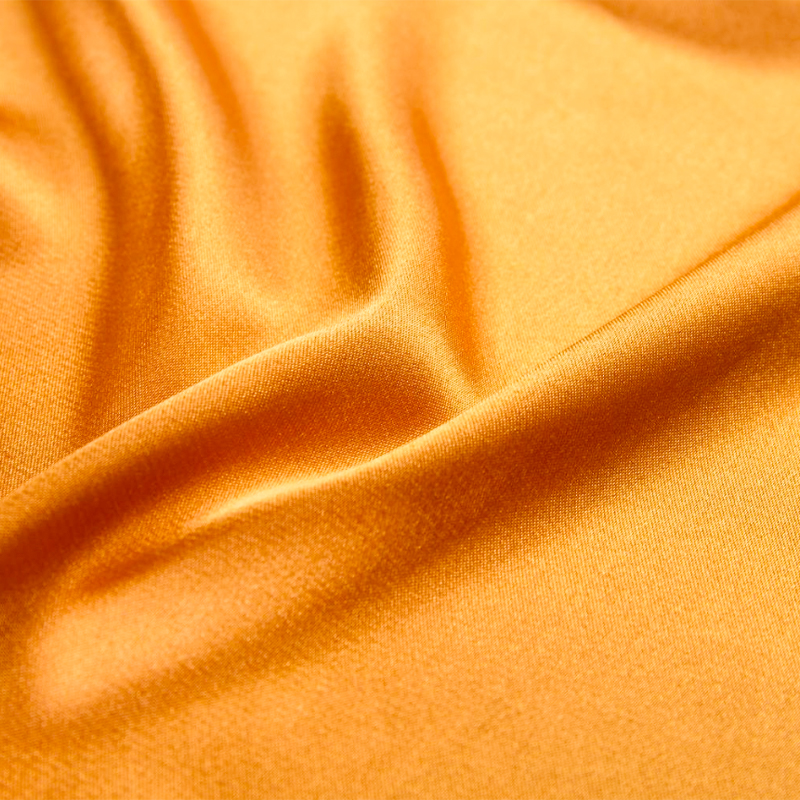Changes in tissue structure significantly impact the look and feel of satin cloth fabric. The tissue structure, or the arrangement of warp and weft yarns during the weaving process, is a critical factor in determining the characteristics of satin. Here's a detailed exploration of how changes in tissue structure influence the aesthetic and tactile qualities of satin cloth:
Weaving Technique:
Satin cloth is characterized by a weaving technique that maximizes the number of floating (unsupported) warp yarns on the fabric surface. The traditional satin weave involves interlacing warp and weft threads in a way that minimizes interlacing points, creating longer, unbroken yarn floats.
Smooth Surface and Luster:
The tissue structure of satin, with its long floating warp yarns, contributes to the smooth and glossy surface of the fabric. The uninterrupted floats allow light to reflect uniformly across the surface, creating a lustrous appearance. Changes in tissue structure, such as variations in the length of floats, can alter the degree of sheen.
Soft and Silky Feel:
The long floats in the satin weave also create a soft and silky feel. As the floats lay flat on the surface, they produce a smooth texture that feels luxurious against the skin. Adjustments in tissue structure, such as increasing the length of floats, can enhance the fabric's tactile softness.

Density and Weight:
Changes in tissue structure influence the density of the fabric. A closer sett (spacing of warp and weft threads) results in a denser fabric, impacting its weight and drape. A more open structure may contribute to a lighter and airier feel. Designers can adjust tissue structure to achieve specific weight and density preferences.
Flexibility and Drape:
The tissue structure affects the flexibility and drape of satin cloth. Longer floats provide more flexibility and suppleness, allowing the fabric to drape elegantly. Design modifications in tissue structure can be employed to tailor the drape of the fabric for various garment styles.
Resistance to Wrinkling:
The tissue structure of satin contributes to its resistance to wrinkling. The smooth surface and long floats minimize creases, providing a crisp and neat appearance. Changes in tissue structure can impact the fabric's wrinkle resistance, influencing its suitability for different applications.
Breathability and Comfort:
While satin is not known for high breathability due to its compact weave, adjustments in tissue structure can influence air permeability. Designers may experiment with variations in tissue structure to enhance comfort, especially in warm weather.
Visual Texture and Patterns:
Changes in tissue structure can be employed to create visual texture and patterns on satin cloth. By altering the arrangement of floats, designers can introduce unique design elements, such as stripes or diagonal patterns, enhancing the fabric's visual appeal.
Innovations in Tissue Structure:
Ongoing innovations in weaving technologies allow for experimentation with tissue structure. Advances such as computerized looms and digital weaving techniques enable intricate variations in tissue structure, leading to the development of modern and unconventional satin fabrics.
Tissue Structure and Sustainability:
Designers are exploring eco-friendly alternatives by incorporating sustainable fibers and experimenting with tissue structures that minimize resource consumption. Innovations in tissue structure contribute to the development of environmentally conscious satin fabrics.





.png?imageView2/2/format/jp2)
.jpg?imageView2/2/format/jp2)
_.jpg?imageView2/2/format/jp2)



